Last Chance to Catch NYC's Holiday Notalgia Train
We met the voices of the NYC subway on our nostalgia ride this weekend!


New York City is a living museum, with its multiple histories layered and compacted side by side, creating impressions that provide a glimpse into how life once was. Dismantling the myriad layers of New York City history is both a fruitful and exhaustive endeavor. For once one secret is uncovered, it is likely that another will soon reveal itself. With a propensity towards the obscure and the occult, a few friends and I registered for the “Edgar Allan Poe and his Ghostly Neighbors of Greenwich Village” tour sponsored by Ghosts of New York, with the hopes of learning of some harrowing tales.
Bedecked in witches’ garb, our Tour Guide, Jamie, was a spirited and knowledgeable storyteller, emphatically describing the places and sites where ghosts have been known to exist. We began the tour at 85 West Third Street, the site of the former residence of Edgar Allan Poe, the preeminent writer of mystery and the macabre. This building façade is a reinterpretation of the original house where Poe once resided from 1844 to 1845 —New York University demolished the historic structure when building Furman Hall.
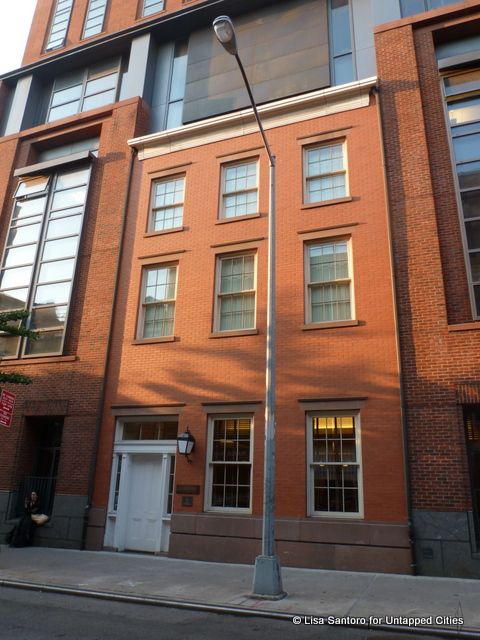 85 West 3rd Street – Recreation of Edgar Allan Poe House
85 West 3rd Street – Recreation of Edgar Allan Poe House
Across the street at 84 West 3rd Street is the former Fire Patrol Station #2, now currently the private residence of CNN anchor Anderson Cooper. Constructed by Ernest Flagg in 1906, the building is said to be haunted by the ghost of Firefighter Schwartz, who in 1930 hung himself from the rafters after he discovered his wife was cheating on him. Said to have haunted the house for fifty years, firefighters have claimed to not only have heard strange noises, but to also have seen the shape of Schwartz suspended in mid air.
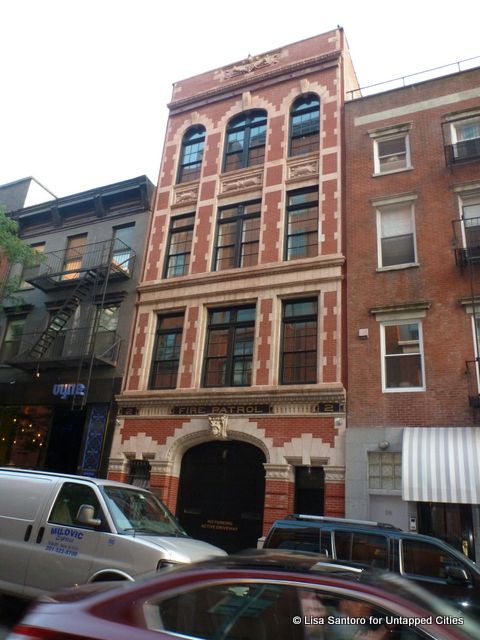 84 West 3rd Street – Former Fire Patrol #2
84 West 3rd Street – Former Fire Patrol #2
We then ambled to Washington Square Park — which has an illustrative, yet eerie history. The stately park one sees today was once a marshland converted into a potter’s field, or a public burial ground, in the late 1700’s. The land on which millions have traversed across is home to the remains of approximately 20,000 bodies.
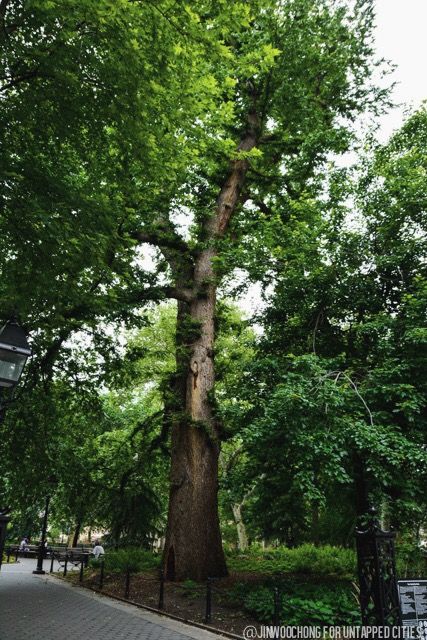
Hangman’s Elm
Also a forum for public hangings, it is said that the tree in which prisoners were hung, known as the “Hangman’s Elm” still exists in the northwest corner of the park. Although some historians dispute if this was the site of hangings, local lore states that the last hanging here occurred in 1820 when Rose Butler, a slave, was executed for burning down her master’s home.
Given Poe’s proclivity towards the macabre, perhaps it isn’t surprising that he chose to live in such close proximity to a public burial ground. However, as open space was deemed to be as restorative as fresh country air, a much more plausible explanation for his moving here would be for his young wife’s health; suffering from consumption, it was thought that open space and fresh air was a method in treating this ailment.
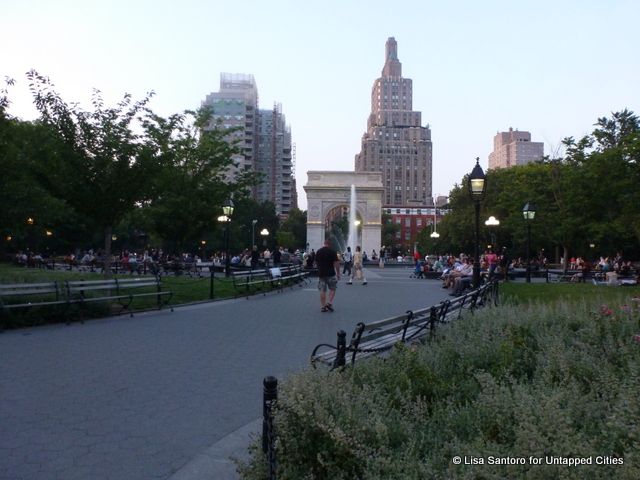 Washington Square Park looking north
Washington Square Park looking north
Walking through Washington Square Park, New York University’s presence is as stifling as its massive buildings abutting the park’s perimeter. At 70 Washington Square South is NYU’s Elmer Holmes Bobst Library, completed in1972 by Philip Johnson and Richard Foster. An imposing red sandstone structure, this building is said to be haunted by a librarian ghost as well as a student ghost. Our Tour Guide Jamie described to us the “rifling of papers” heard by many a student while in the library. Adding another level to Bobst’s eeriness is that it has been the site of at least nine tragic student suicides within the past decade.
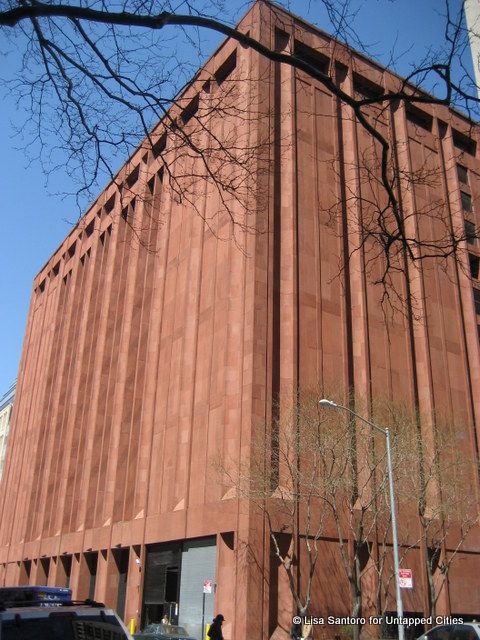 New York University’s Bobst Library
New York University’s Bobst Library
Around the corner, Washington Square East intersects with Washington Place. Although this street appears tranquil in the dusk light, this block was the site of a tragic event that had lasting implications regarding the labor movement. On the corner is the former Asch Building, which contained the Triangle Shirtwaist Company, infamous for the fire that claimed the lives of 146 mostly female garment workers. As the doors were locked by supervisors to prevent mid-day breaks, the workers were trapped in the building; plummeting from the windows was their only chance of survival. Although one hundred years have passed since the fire, people still claim they can hear the screams and cries of ghosts. Today the building still exists — it has been incorporated into NYU’s Silver Center for Arts and Science in 2002.
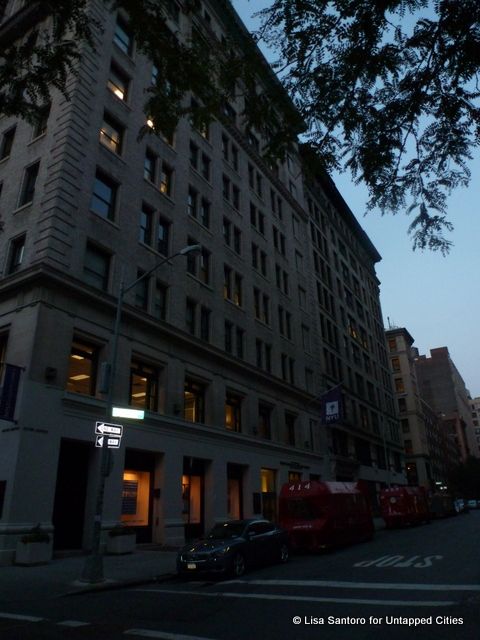 View of Asch Building (far right) – site of Triangle Shirtwaist Company Fire
View of Asch Building (far right) – site of Triangle Shirtwaist Company Fire
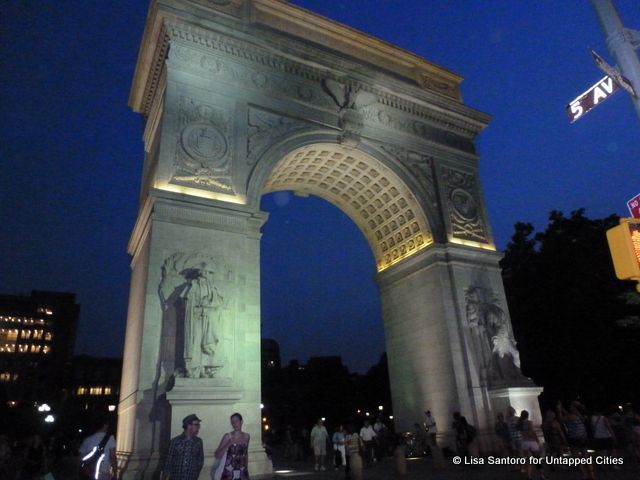 Washington Square Arch – illuminated at dusk
Washington Square Arch – illuminated at dusk
Standing in front of Stanford White’s Washington Arch, illuminated and omnipresent, it is a strange sensation to think that this stately monument celebrating the centennial of George Washington’s inauguration stands on and under the same earth where so many have lost their lives. But in New York City where land is at a hefty premium, it is not shocking that we share our space with the ghosts and spirits of the City’s past inhabitants. Perhaps this can be perceived as a source of supernatural inspiration, as it was for Poe nearly two centuries before — for a block away stands the house where he presented his iconic poem “The Raven” for the first time.
Thank you to Dr. Phil Schoenberg, founder of Ghosts of New York as well as Jamie Owens, Ghosts of New York Tour Guide. For more information on their Ghost Tours, visit their website — Ghosts of New York.
Get in touch with the author @lITERAlEE.
Subscribe to our newsletter